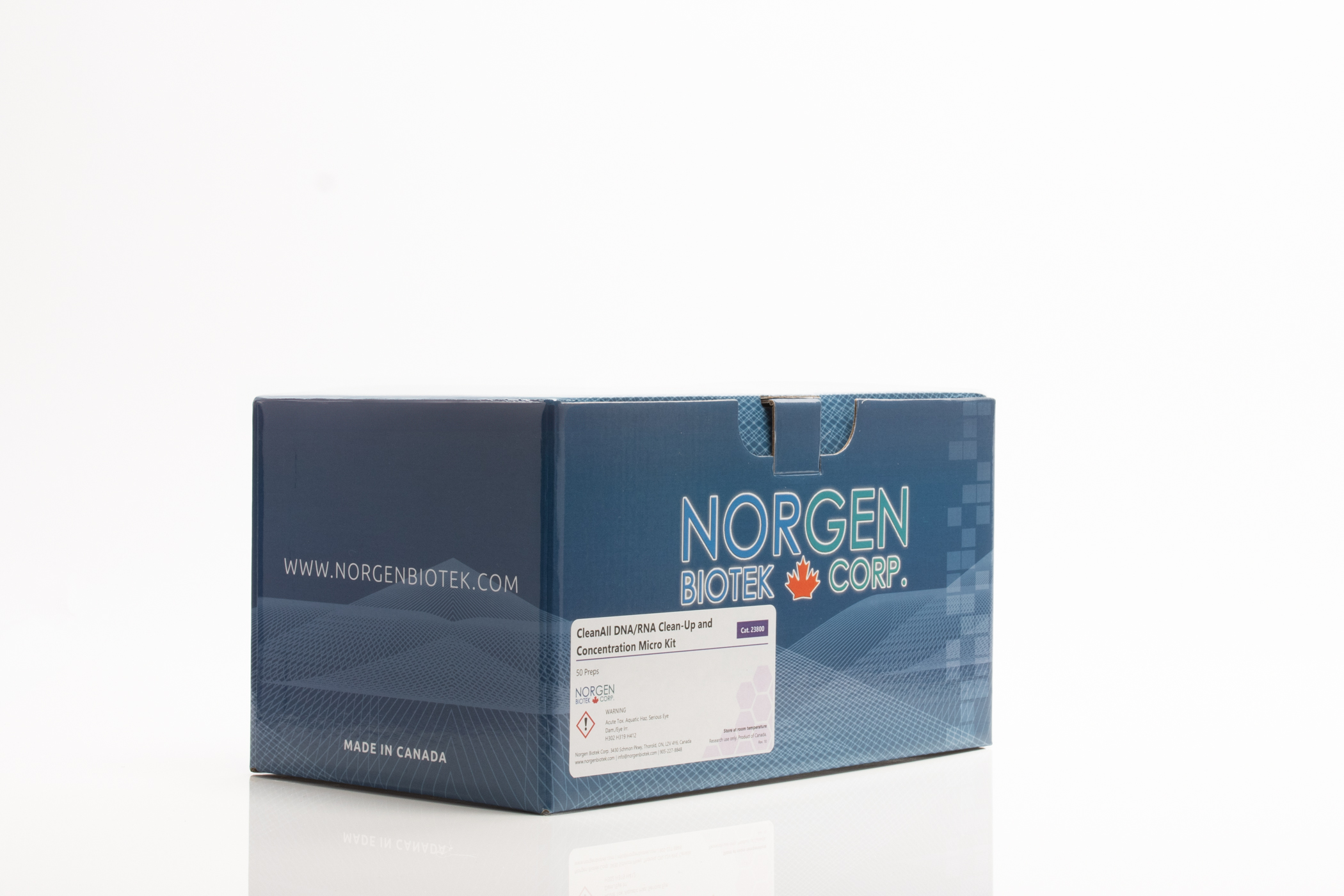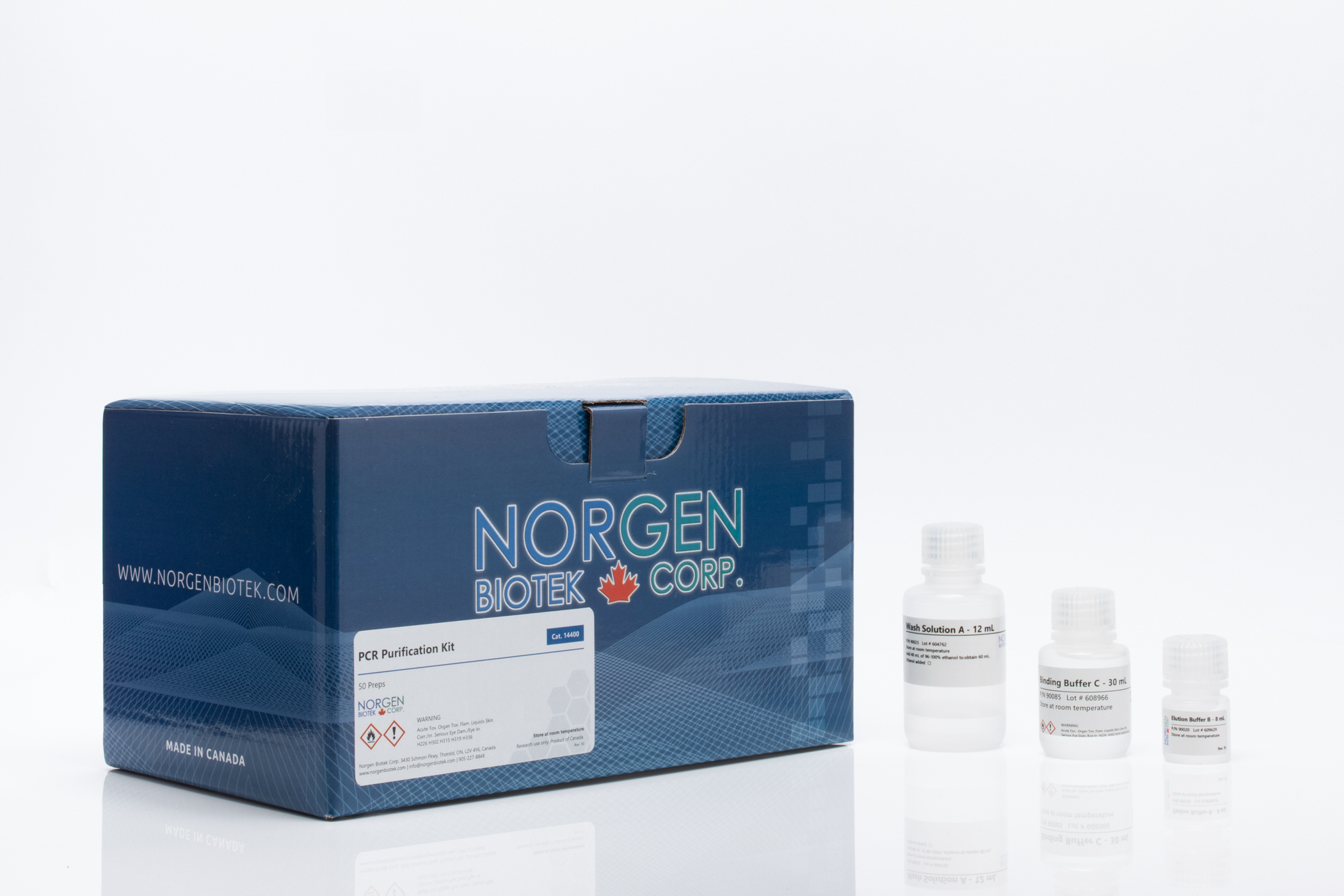Oligo Clean-Up and Concentration Kit




For research use only and NOT intended for in vitro diagnostics.
Oligo Clean-Up and Concentration Kit
Register today to receive an exclusive 15% off* on your first order.
Supporting Data
Figure 1. Integrity of Purified DNA Oligonucleotides. Oligonucleotides of different sizes (15mer, 20mer, 42mer and 61mer) were purified using Norgen's Oligo Clean-Up and Concentration Kit, and the integrity of the oligonucleotides before and after cleaning were compared by running a 15% urea-PAGE gel. Equal volumes of the input (I) and cleaned (C) oligonucleotide were run, and as it can be seen the purified oligonucleotides were of a high quality and integrity. Please note that the kit can also clean a mixture of different oligo sizes, as shown on the far right two lanes.
Figure 2. Integrity of Purified dsDNA. Samples of Norgen's MiniSizer DNA ladder (25bp-650bp) were purified using Norgen's Oligo Clean-Up and Concentration Kit, and the integrity of the dsDNA before and after cleaning was compared by running aliquots on a 2% agarose gel. Both the input volume and the elution volume were maintained at 50 µL, and 5 µL and 10 µL of the input and 5 µL and 10 µL of the elution were run on the gel for visual comparison. As it can be seen, the purified dsDNA was of a high quality and integrity. The overall recovery of the different ladder bands is 82% of the input.
Figure 3. Integrity of Purified RNA. Samples of Norgen's 100b RNA ladder (100b-1000b) were purified using Norgen's Oligo Clean-Up and Concentration Kit, and the integrity of the RNA before and after cleaning was compared by running aliquots of the input and elution on a 1.4% formaldehyde-agarose gel. Both the input volume and elution were maintained at 50 µL, and 5 µL and 10 µL of the input and 5 µL and 10 µL of the elution were run on the gel for visual comparison. The kit provides efficient RNA recovery of all the ladder bands. The overall recovery of the different ladder bands is 84% of the input.
|
Kit Specifications
|
|
| Column Binding Capacity |
10 μg for DNA or RNA
|
| Maximum Column Loading Volume |
600 μL
|
| Size of DNA/RNA Purified |
> 10 nt, single stranded
or double stranded |
| Maximum Amount of Starting Material |
10 μg of DNA or RNA
|
| Minimum Elution Volume |
20 μL
|
| Time to Complete 10 Purifications |
15 minutes
|
Storage Conditions and Product Stability
All solutions should be kept tightly sealed and stored at room temperature. This kit is stable for 2 years from the date of shipment.
| Component | Cat. 34100 (50 preps) |
|---|---|
| Buffer RL | 30 mL |
| Wash Solution A | 20 mL |
| Elution Solution A | 6 mL |
| Micro Spin Columns | 50 |
| Collection Tubes | 50 |
| Elution Tubes (1.7 mL) | 50 |
| Product Insert | 1 |
Documentation
FAQs
Spin Column
If a variable speed centrifuge is unavailable, a fixed speed centrifuge can be used. However, reduced yields may be observed.
Varying the centrifugation speed from the recommended setting could result in a decrease in oligonucleotide yields.
Yes, you can. All the solutions included in the sample preparation step of this kit are in a linear relationship to the volume of oligonucleotide sample processed. Make sure that you do not deviate from the ratio specified in the product manual. The solutions are optimized per 50 µL of oligonucleotide sample.
Adding less volume may reduce your oligonucleotide yields. Adding more may not affect the oligonucleotide yields EXCEPT if more Elution Solution A was added.
Eluting oligonucleotide in more
Elution Solution will result in diluting your yield.
If you forget to perform a dry spin after the third wash, your oligonucleotide elution may become contaminated with Wash Solution A. This has the potential to dilute the oligonucleotide yield in your elution and could also interfere with downstream applications.
If the recovery of the oligonucleotide is poor, ensure that isopropanol was added during the sample preparation step and ethanol was added to Wash Solution A. Additionally, it is recommended to use the Elution Buffer provided with the kit for optimal recovery.
The underperformance of your oligonucleotide in downstream applications may be attributed to the following factors:
- Insufficient washing of the column.
Ensure that the column is thoroughly washed three times with Wash Solution A during the binding step to eliminate any traces of salt, as residual salt can hinder downstream applications.
- Incomplete removal of ethanol.
Make certain that the dry spin under the Column Wash procedure is executed to remove ethanol traces before elution, as ethanol can interfere with various downstream processes.
- Use of a different Elution Solution.
If a different Elution Solution was used instead of the provided kit solution, assess it for components that might disrupt the application, such as high salts (including EDTA), detergents, and other denaturants. Verify the compatibility of your chosen elution buffer with the intended downstream use to address any potential interference issues.






